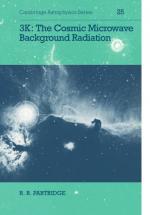|
This section contains 498 words (approx. 2 pages at 300 words per page) |

|
The 1965 discovery of cosmic background radiation by Arno A. Penzias and Robert W. Wilson provided important evidence in support of big bang based cosmological models first proposed after American astronomer Edwin Hubble's (1889-1953) discovery that the universe was expanding. Big bang models assert that the universe started as an extremely small and highly energetic plasma of all kinds of particles. As this matter expanded, the form of the matter changed as it underwent many transitions. Cosmic background radiation is a relic of one of these cosmological transitions, and it remains the best evidence to verify the big bang theory. In addition, precise measurements of cosmic background radiation allow physicists to study the formation of structure in the early universe.
The early stages of the universe were radiation dominated, because all particle energies were so high that they could be considered without mass, as in...
|
This section contains 498 words (approx. 2 pages at 300 words per page) |

|


